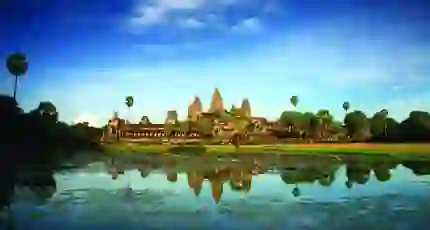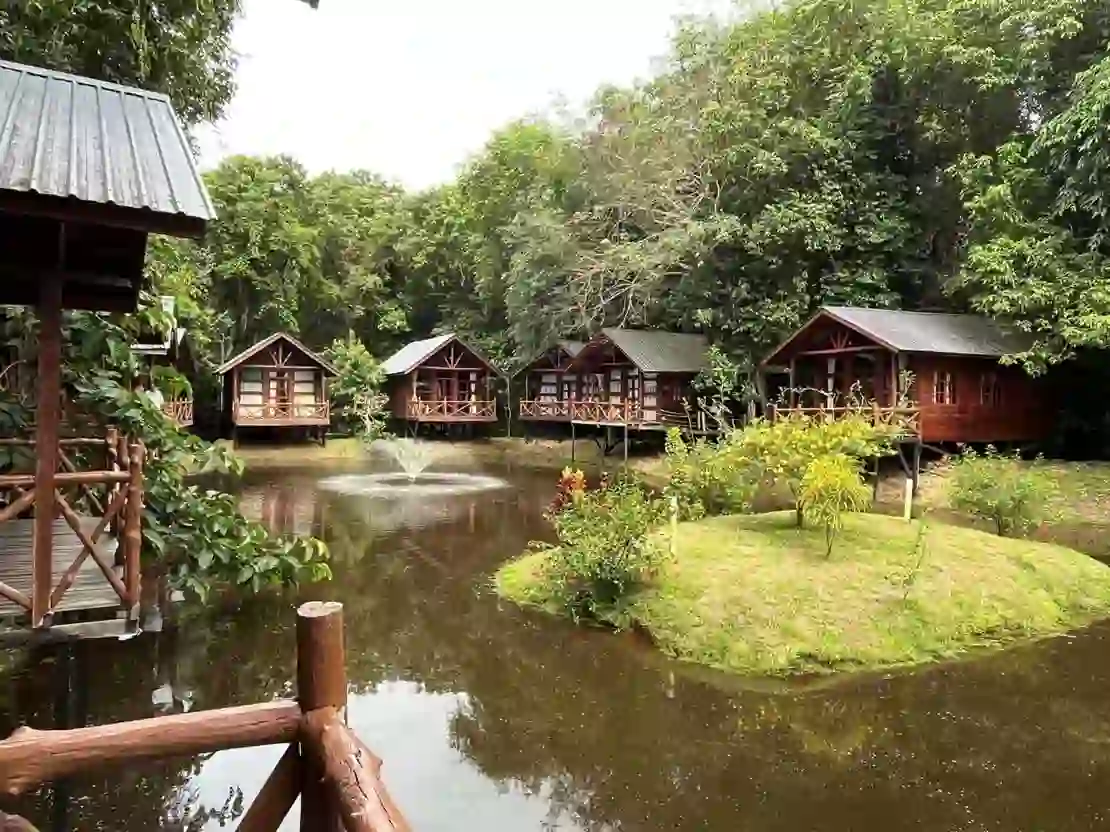
A historical guide to the temples of Angkor
In August 1296, a young Chinese man travelled to Angkor, the main artery of Cambodia’s Khmer Empire. Sent on official diplomatic duties by Chinese emperor Temür, Zhou Daguan recorded observations of his 11-month stay in the wealthy capital. This later formed A Record of Cambodia: The Land and Its People, the only remaining primary account of life at Angkor.
'In the centre of the capital is a gold tower, flanked by twenty or so stone towers and a hundred or so stone chambers. To the east of it is a golden bridge flanked by two gold lions, one on the left and one on the right. Eight gold Buddhas are laid out in a row at the lowest level of stone chambers,' Zhou wrote in his book.
More than 700 years later, the gold is gone. The gold towers, gold Buddhas, and gilded stuccos lost to theft and centuries of erosion. But the UNESCO-listed ruins still stand as a captivating look into an ancient, pre-industrial era, making it Cambodia’s most popular destination for travellers, history buffs, and archaeology enthusiasts.
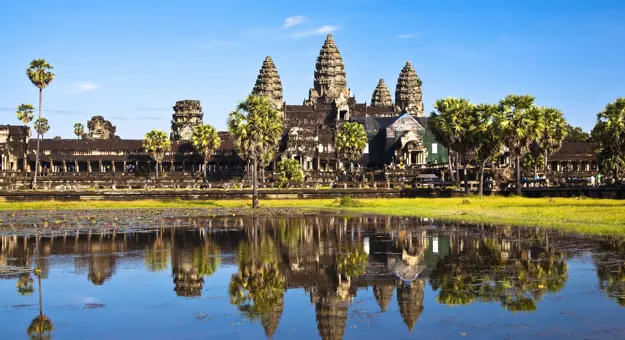
Angkor Wat
Spanning 15 miles from east to west and five miles north to south, Angkor’s archaeological park is located in Northern Cambodia, just north of Siem Reap. The most distinctive temple on site is Angkor Wat, a building that features on the present-day Cambodian flag.
Built by King Suryavarman II, who ruled between 1113 to 1150, it served as the administrative hub for his powerful empire. As per the Khmer’s construction style, Angkor Wat was built from blocks of sandstone. The sandstone was quarried from the Kulen Hills, approximately 18 miles north of the temple, and ferried over using a series of canals.
By the conclusion of the 13th century, the temple had transitioned into a Buddhist site, despite originally being constructed as the king’s dedication to his Hindu god of protection, Vishnu. Buddhist monks then took over the site, however, it was eventually abandoned by the 16th century.
In 1860, the temple ruins - then shrouded in jungle overgrowth - were ‘rediscovered’ by French archaeologist Henri Mouho. Technically, Cambodian locals were already aware of the site, but Mouhot was the first westerner to publicise its existence, leading to an extensive restoration project. In 1992, Angkor was declared a UNESCO World Heritage Site (visit our guide to the best UNESCO sites).
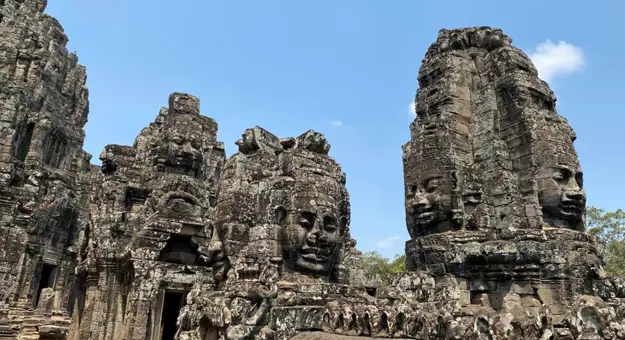
Bayon
The gold tower Zhou mentioned in his book is the Bayon. Gone are the shining buddhas, however it still presents an imposing sight in stone. The final state temple built in the Angkor complex, the architectural style of Bayon is noticeably different from Angkor Wat and other major temples within the archaeological park
Ordered to be constructed by Jayavarman VII in the mid 12th to early 13th centuries, it is sometimes referred to as Jayavarman's Temple, in honour of the Khmer king. However, it's best known for the smiling faces carved into the temple’s many towers. There are 50 towers around Bayon, with more than 200 faces in various states of wear. The commonality is the same tranquil expression, a soft smile with eyes peacefully closed, as if in a state of meditation.
Bayon is home to a wealth of intricate, well-preserved carvings. The southern wall depicts scenes of a marine battle between the Khmer and the Cham and other walls feature carvings of everyday scenes, including food markets, childbirth, and religious rites of passage. Any carvings left uncompleted are said to be a result of Jayavarman VII’s death.

Banteay Kdei
Banteay Kdei, which translates to ‘A Citadel of Chambers’, is a Buddhist temple within the Angkor archaeological complex. Also built during the reign of Jayavarman VII, the temple is made up of a striking maze of chambers, featuring three enclosure walls and two concentric galleries from which towers spring up. Smaller than the other temples within the park, Banteay Kdei is a great option for visitors who prefer fewer crowds.
Unfortunately, the original construction work of Banteay Kdei was rapidly and imprecisely completed, plus the quality of the sandstone was softer than the sandstone used for constructing Angkor Wat. As a result, the temple has recently had to undergo further renovations.
Best tours to Cambodia
- Discover the historical landmarks of Hanoi, including Hoa Lo Prison, the Ho Chi Minh Mausoleum and the Imperial Citadel
- Set sail on an overnight cruise around the spectacular Halong Bay, with a cooking class, squid fishing and morning tai chi
- See the Củ Chi tunnel complex while learning about the importance of this underground labyrinth
- Flights included
20 days from £4,603 pp
was £4,845 pp
Dates Available
October 2026 - November 2026
Duration
20 days
Depart From
1 airport
Excursions & Visits
16 included
Meals
36 included
- Exploring Bangkok's Buddhist palaces and monuments
- A visit to Ho Chi Minh City (formerly known as Saigon)
- Journey along the Mekong River by fast passenger boat
- Flights included
15 days from £3,034 pp
was £3,569 pp
Dates Available
April 2026 - November 2028
Duration
15 days
Depart From
5 airports
Excursions & Visits
9 included
Meals
27 included
Angkor Travel Tips
Here are some top travel tips when planning a visit to the Angkor site.
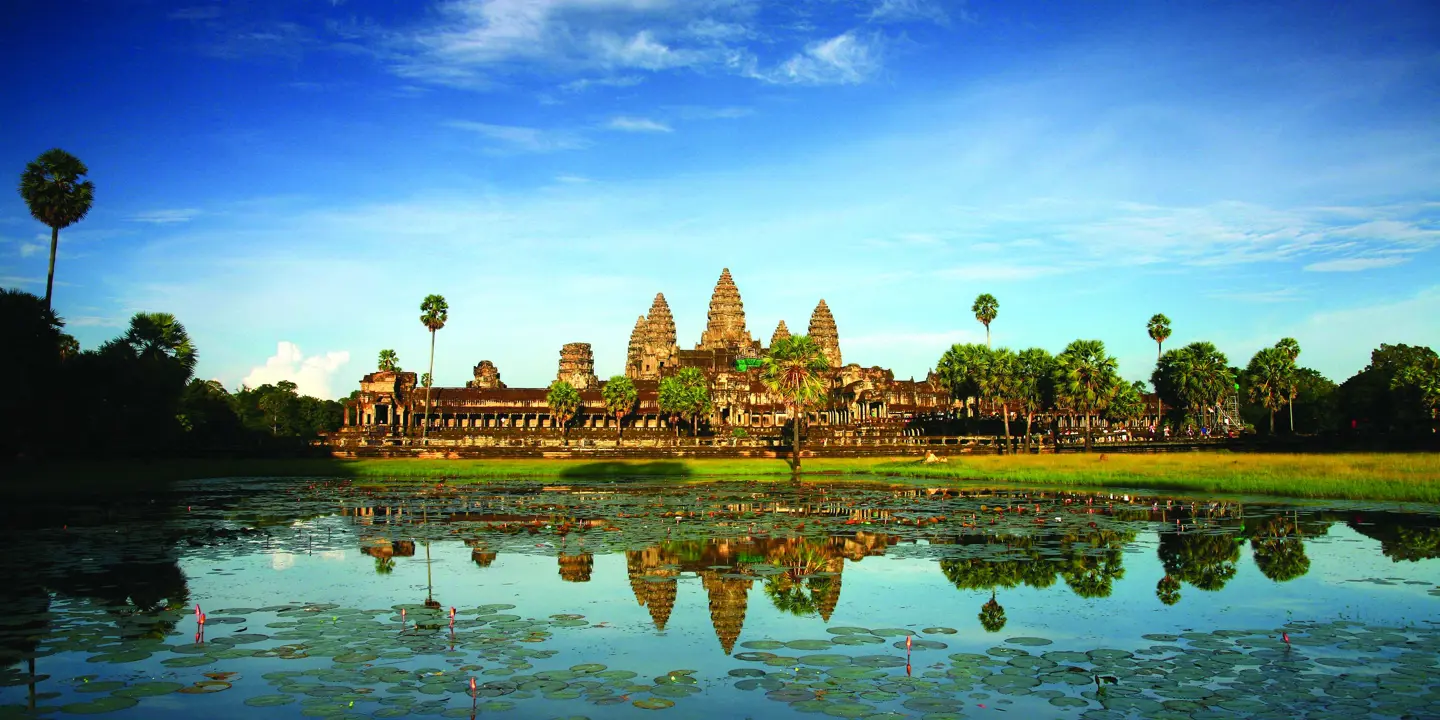
Managing the heat
Discover our blog
Six things to do in Bangkok
If you want a tropical city break with plenty of culture, tasty cuisine and shopping opportunities, then Bangkok is the perfect travel destination.
Four things to do once you land in Luang Prabang, Laos
Luang Prabang things to do: Discover the best things to see and do in Laos' charming city. Read our blog and book your trip with Newmarket Holidays.
Staff Stories: The rainforests and orangutans of Borneo
Uncover the lush forests and rare primates of the beautiful island of Borneo.

